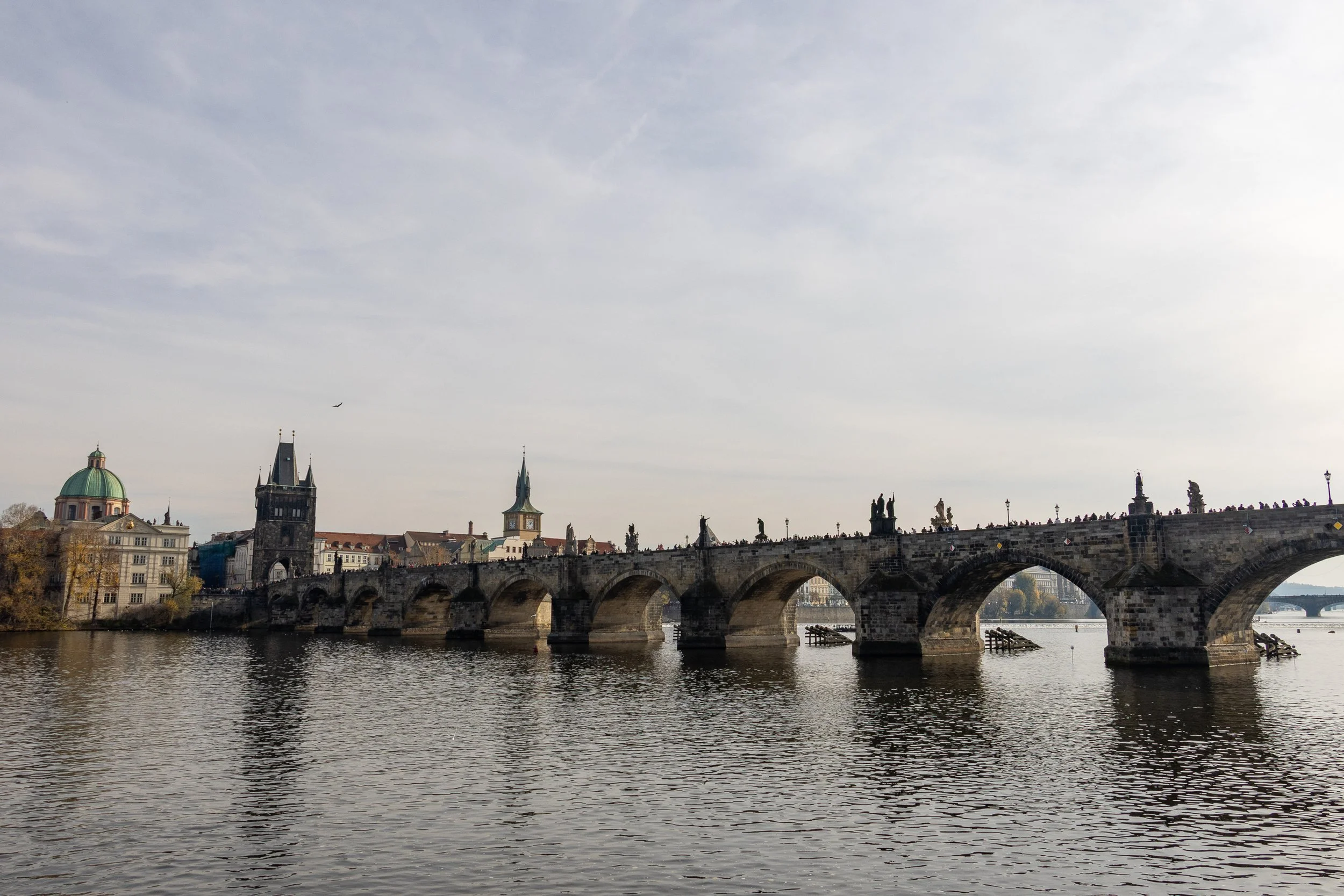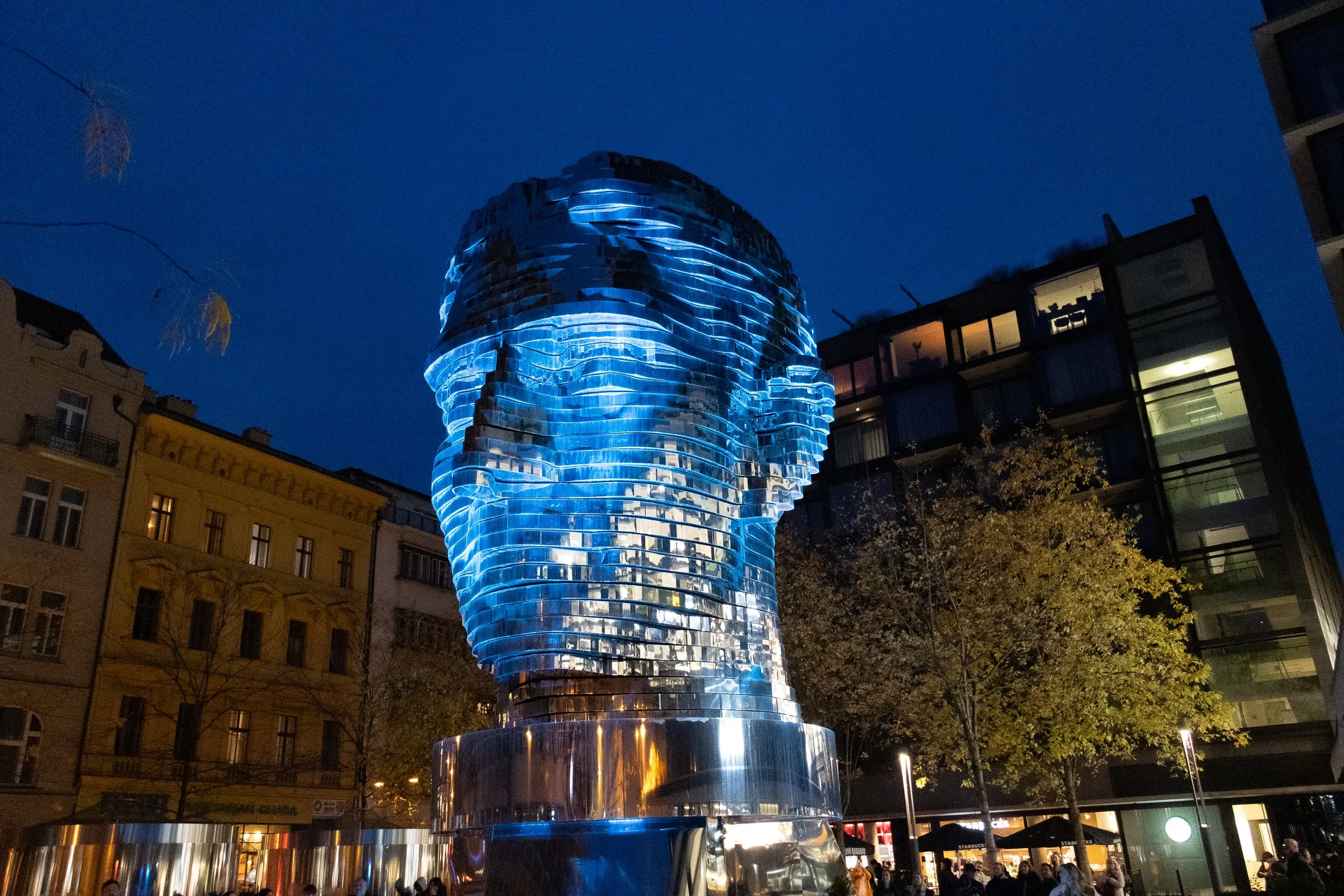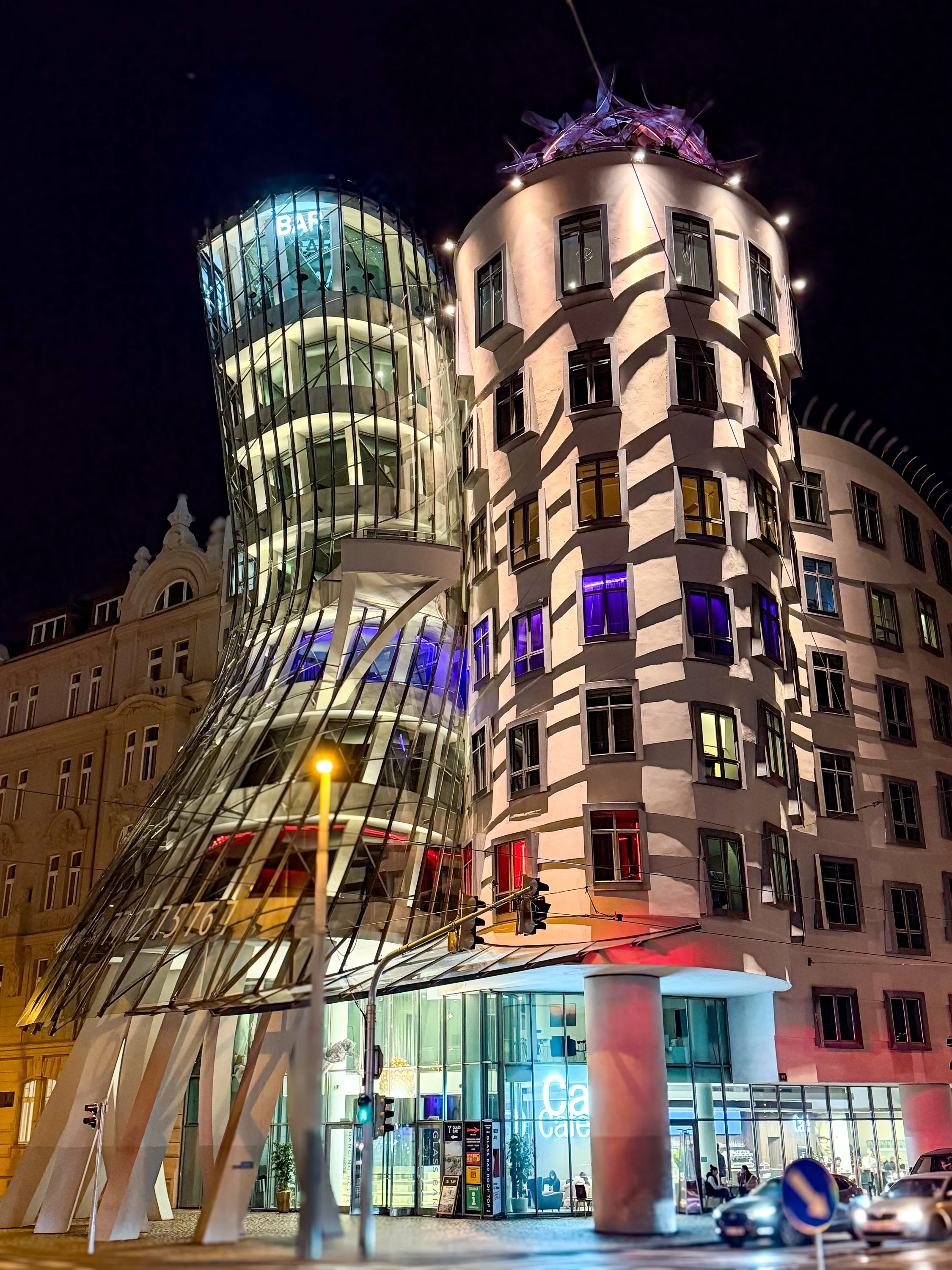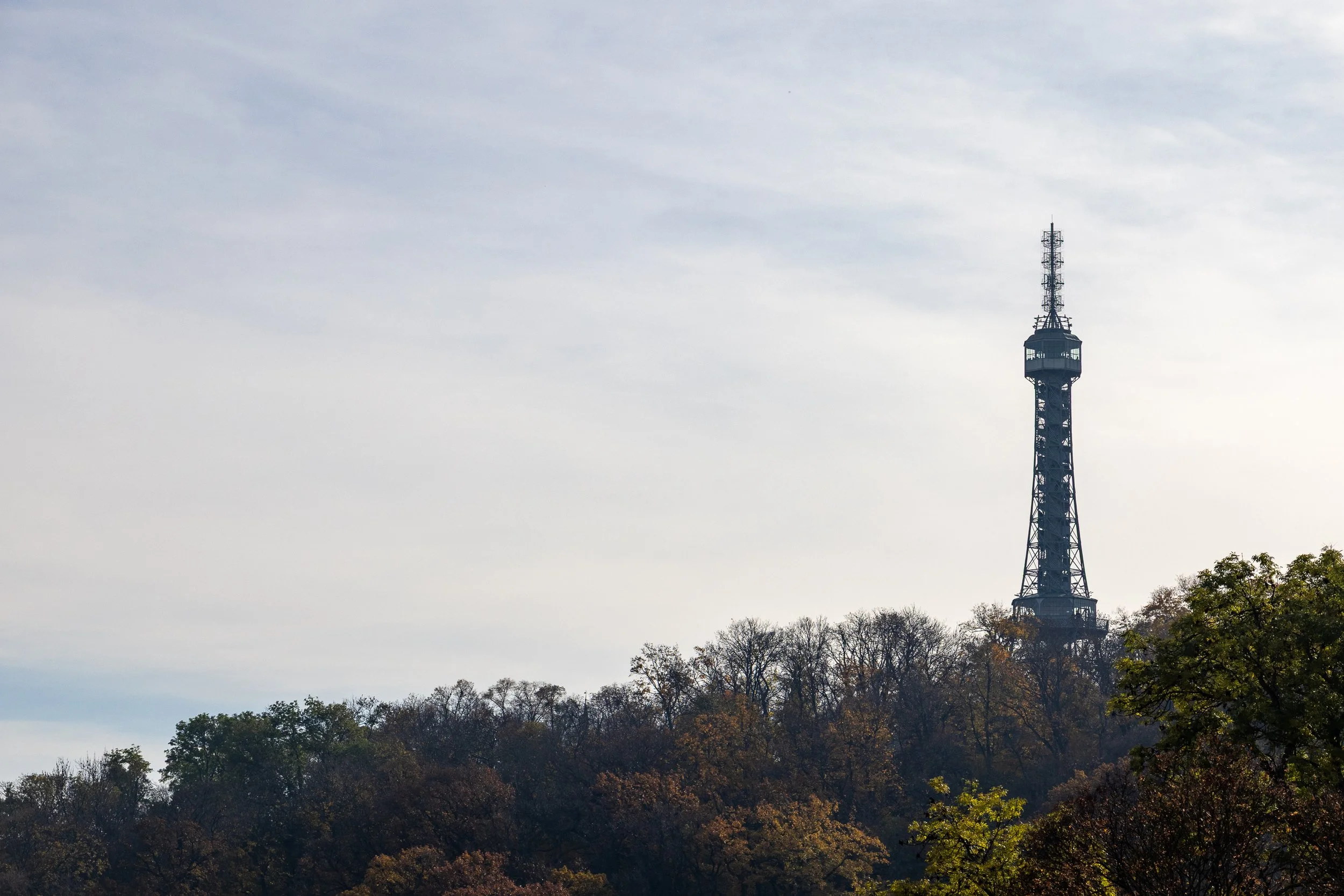Prague
Czech Republic
Prague is the capital of the Czech Republic, or Czechia. If you are tempted to call it Czechoslovakia, we don’t blame you; it used to be called that, but now it’s not so resist the urge. If you have ever heard the word “Bohemia“, it comes from this area of the world. It makes up a large portion of modern Czechia, and historically has changed hands many times, muddying its meaning. It has been held by Austrians, the Holy Roman Empire, and Germany as part of the Sudetenland. It is not not be confused with “Boheminism“ or “Bohemian”, which are unrelated and come from the French language.
How to Get Around Prague
Rent a Car or Public Transport?
One of the best things about Europe in general is how easy it is to get around the cities. If you are driving, it is really the same as anywhere else. Streets are well marked and the traffic flows well. The most important thing for drivers from the US to remember is that there is no such thing as a right turn on a red light. Red means stop, period.
Even if you drive into town, or rent a car, public transportation is the way to go. Find an accommodation with free parking if you have a car, and get some public transportation tickets to get around. It is so much easier than constantly finding, and paying for, a new place to park when you want to leave the area and go somewhere else.
Prague uses an open system, which means you hop on and off public transportation without scanning anything, and you can use the bus, metro, and tram systems interchangeably. The city uses a ticket and validation system, and there are tickets available at metro stops, newsstands, information centers, or though the PID Litacka app.
After purchasing your ticket, you MUST validate it! Validation can be done on the app if you purchase tickets on your phone, and if you buy a physical ticket, there are yellow or orange validation machines on each tram, bus, or at metro stops. Without validation, your ticket is not valid. Enforcement is done at random by transportation representatives, and the fine is far in excess of your ticket. We have been stopped multiple times in the past, so don’t try to cheat the system! Ticket machines have the option of displaying in several languages, so don’t be afraid that you can’t do it on your own! Just remember, pick the appropriate ticket, validate, and go!
Money
The Czech Republic uses the Koruna, which translates to crown in English. One crown is ostensibly equivalent to 100 haller, but haller are no longer in circulation, so you won’t need to worry about making small change. Even though the country is a part of the EU, they have not yet adopted the euro as their currency. Technically they are obligated to do so at some point, but support for the switch is low, so it probably won’t happen anytime soon. We love the different currencies of the world, and think this adds to the romance of travel.
While having some cash on hand is always a good idea, there are almost no businesses that are cash only. Tap to pay is the default and standard; it’s simple, easy, and everyone knows how to do it. If you want to make your transactions mooth, we suggest having your card on your phone and tapping as you go. Checks will not be accepted, don’t be that guy.
Food
Food is Prague is fairly cosmopolitan. There’s a little bit of everything. If you want to go out for every meal, you can find every kind of cuisine, as well as fast food staples like Burger King or McDonalds. If you want something more appropriate to the region, you can find goulash, lagosz, pierogis, and one of the ever popular Czech beers. Cafes and coffee are a big part of the tourist areas, so if you need a caffeine fix, you’re in luck. Cappuccino and flat white are the popular drinks, and you’ll be hard pressed to find a mocha latte in this part of the world.
Language
The language can be a challenge, no doubt about it. There are not many cognates to English in the Czech language, and it is Slavic in origin with several of its own special marks. It similar to Polish and Slovak, and while it uses the Latin alphabet most of the words are going to be indecipherable to someone who speaks only English. We suggest having a translating app handy when you’re out and about, and context clues will be your best bet to staying on the right track. Google Translate works just fine, and you’ll want data for your phone to get around. If your provider doesn’t have a plan for visiting other countries, make sure you get a sim or e-sim when you arrive.
What to See in Prague?
One of the first things you will see when you come into old Prague proper is Prague Castle. Given a place of prominence atop a lofty hill, the seat of power for the rulers of Bohemia is also the largest ancient castle in the world. It houses the Bohemian royal jewels and is today the residence and official workplace of the president of the Czech Republic.
For visitors, it is the first thing on the list. It is the most visited site in Czechia, and attracts millions each year. The official numbers may even be short, as some choose not to pay to tour the interior. Much of the grounds are open for the public to walk.
The Astronomical Clock, known as the Orloj, is built into the Old Town Hall in the Old Town Square. It features a clock, of course, but the real unique aspects are the astronomical díal, the hourly show of figurines, and the calendar depicting the months of the year. Each hour there is a musical number and the figurines, depicting the apostles, rotate around two small windows above the clock. It mayn ot seem like much more than a simple device run by gears and springs, but at the time it was constructed this was a masterpiece of engineering, a wonder for people who would never own something as simple as a clock of their own.
The clock is pictured here with the ever present crowd of onlookers. The Old Square is always busy, as is to be expected, but when the bell strikes the hour there is always a large crowd to observe the old masterpiece do its thing, and they clap like a plane just landed when it does.
Construction of the Charles Bridge began under King Charles IV in 1357, and was finished in the year 1402. It was originally referred to as the Stone Bridge, or Prague Bridge, but has been known as Charles Bridge for many years.
The bridge was, and still is, an important crossing of the River Vltava, but the main attraction in a world where people are not dependent on bipedal transportation, is the 30 statues lining the bridge. Though all of the originals have been removed to the Casement below the Vyšehrad, replicas weather the elements in the original’s place on the bridge.
Vyšehrad (not pictured here) is the name for a complex of buildings, or more accurately perhaps, the entire area on top of a hill in Prague overlooking the Vltava River, where a fortress has stood for around 1,000 years, and likely longer. You may recall that the word “hrad“ is used in many of the languages in use in and around the Czech Republic to refer to castles. This is another of the more visible landmarks in the city, as the basilica on the grounds is prominent atop a hill and faces the river, making it apparent to anyone on or near the river with an unobstructed view.
Today, the walled area contains the Saints Peter and Paul Basilica, a cemetery, casements under the ground where are stored the statues from Charles Bridge, and numerous buildings from numerous ages.
The Franz Kafka Head is a dynamic piece of art that I think the enigmatic writer would have enjoyed. The silver image of the man’s uppermost appendage rotates around in flippant and amusing patterns, making grotesque shapes out of a human likeness. Kafkaesque indeed.
The Klementinum (or Clementinum) is a place of great significance in Prague. It currently houses the National Library, and one of the most beautiful libraries in the world besides. In the past it was the home of a large Jesuit college, and it is the home of the longest running weather record in the world. From 1775, the temperature at the Klementinum has been recorded, right up to the present day. In the past it was done manually three times per day, but now it is done electronically, as often as every 10 minutes.
Returning to the library, it is no exaggeration to say this is one of the most beautiful in the world. The woodwork and architecture, the nature of the volumes held within, the decoration and massive globes spread throughout the gallery, all contribute to the breathtaking room. The fact that is is also off limits to all but those granted special access for research purposes only adds to the allure. If you schedule a tour, you are able to view the library, but not enter, as many of the texts are exceedingly old and delicate.
This was also the site of the first World's Fair. Albert Einstein taught here, Mozart played here, and my favorite fact: there is a statue of an angel in one of the upper floors of the Astronomy Tower that is purported to protect the Klementinum, but the only recorded theft from the complex has been… the statue of the angel!
The Dancing House is a single building meant to look like two dancers, at least as much like two dancers as a single building can. The inspiration came from early American actors and dancers Ginger Rogers and Fred Astaire. The building is another sight to see, and is easily accessible by foot or public transportation. It is not far from the Vyšehrad. There is a restaurant and bar on the top floor, but other than the building’s appearance it doesn’t have much appeal, so this can be a quick photo opportunity.
Founded in 1143, the Strahov Monastery (not pictured here) is another fan favorite, not least because it lies between the Petrin Tower and Prague Castle, and has some lovely paths connecting them. A walk along these pedestrian thoroughfares on a sunny day will invigorate anyone’s spirits with sights of the beautiful town and the wonderful architecture, framed by nature.
Aside from the extensive history of the Abbey and Monastery as a whole, there are two attractions that stand above the rest. The remains of St. Norbert are interred within the Monastery, and there is a beautiful library and collection of naturalistic specimens to observe. These require a ticket for admission, but we thought the price well worth it. Walking through some of the grounds is free, however.
The monastery sits on a hill above Prague, nearly as high as the Petrin tower. It features an abbey, a beer garden, and a gorgeous library. The collection of naturalist items is impressive and fun.
It costs money to ascend to the top of the Petrin Tower, one of the tallest points in Prague. The view is grand, and looks down on the river, Prague Castle, and the old town. The views of the city from the ground are great too, and the paths around the tower are worth the walk by themselves. The whole city is walkable, but these wooded paths lead from Perrin Tower to the Strahov Monastery and beyond, and are much more peaceful than walking the busy city streets.








